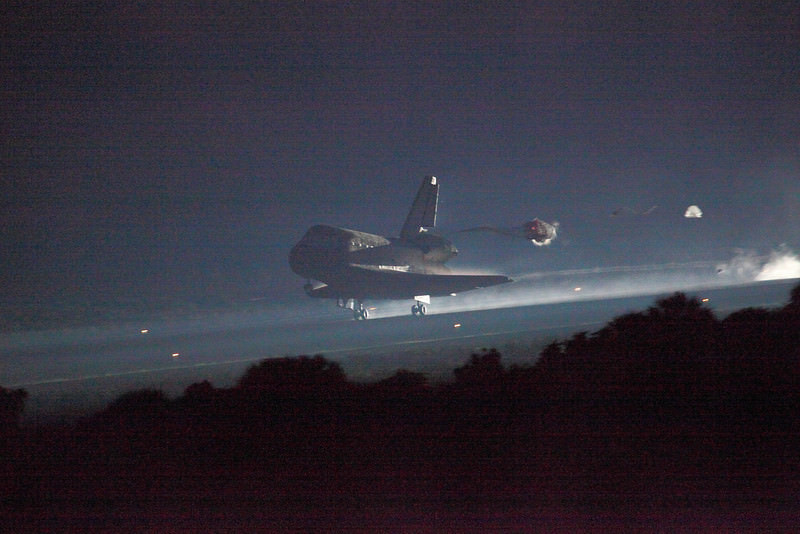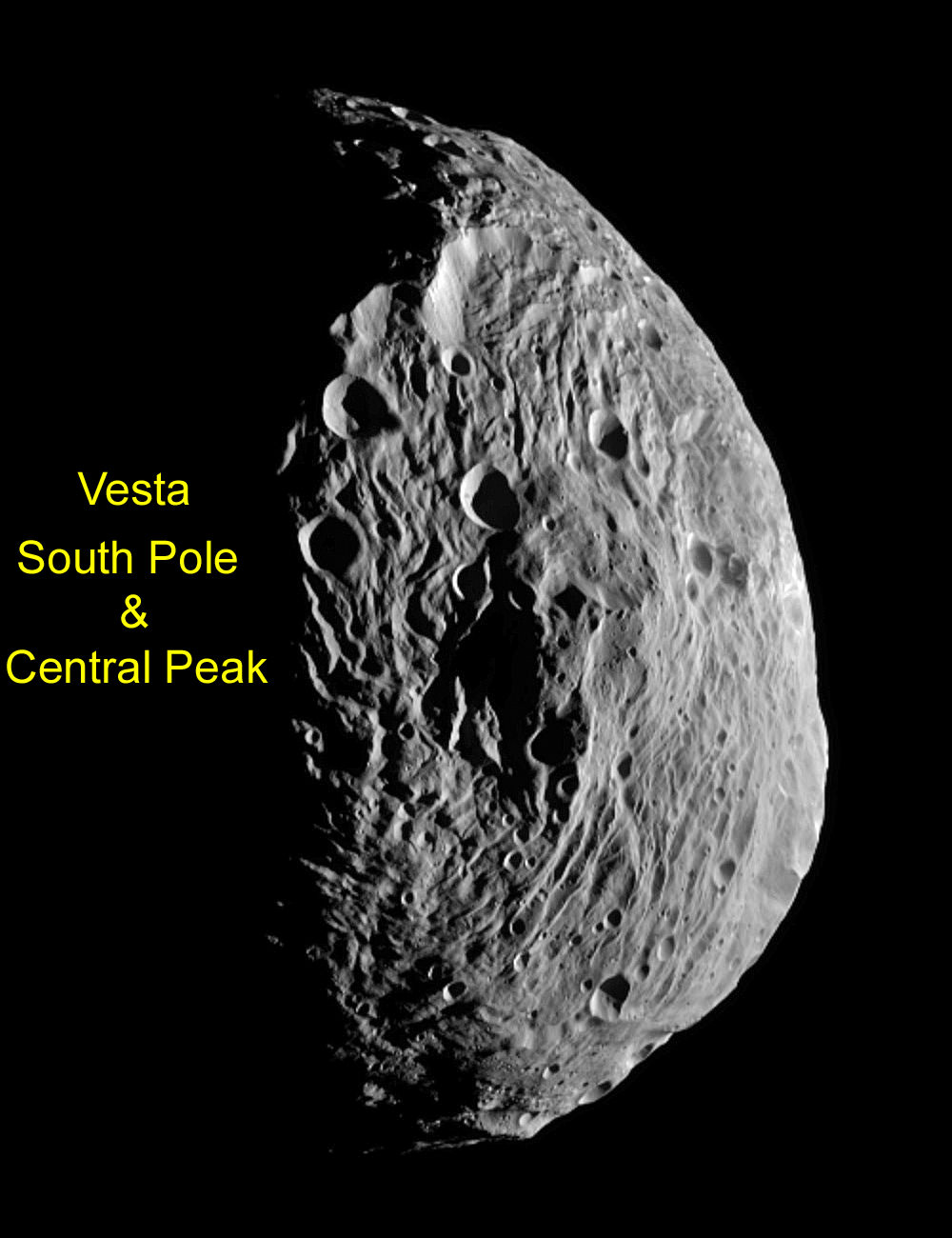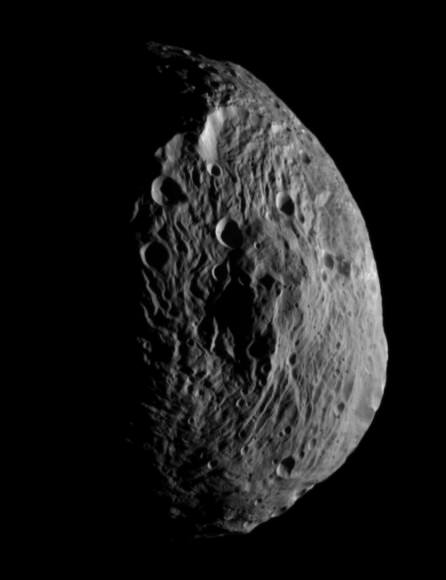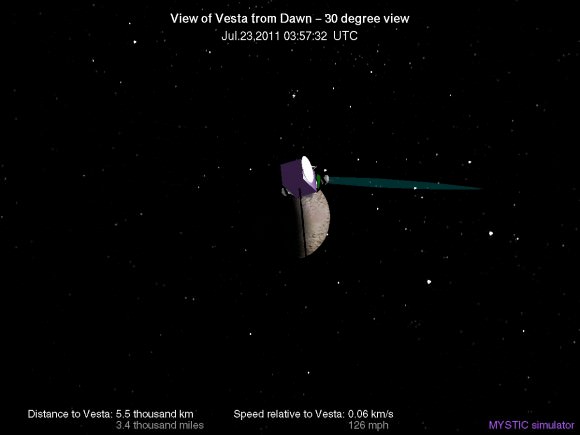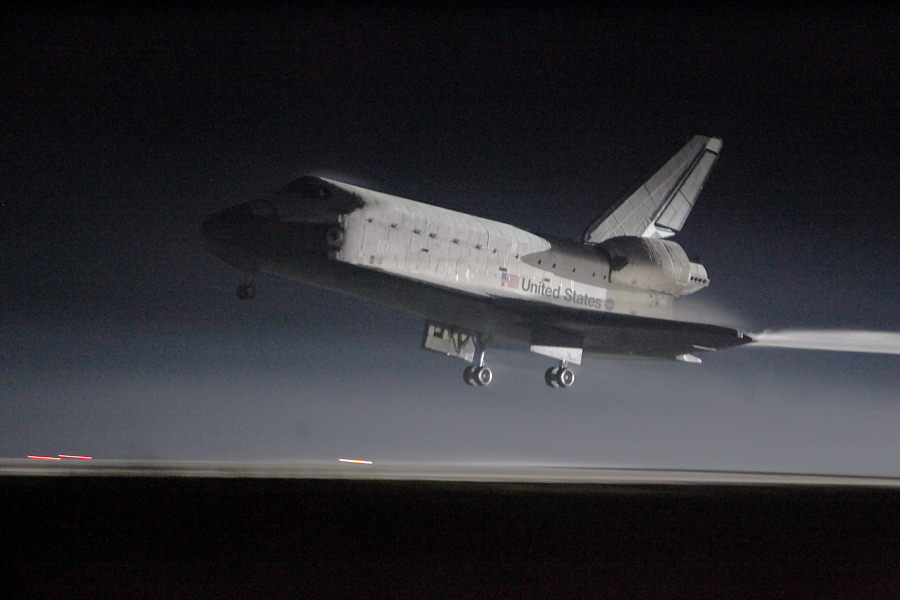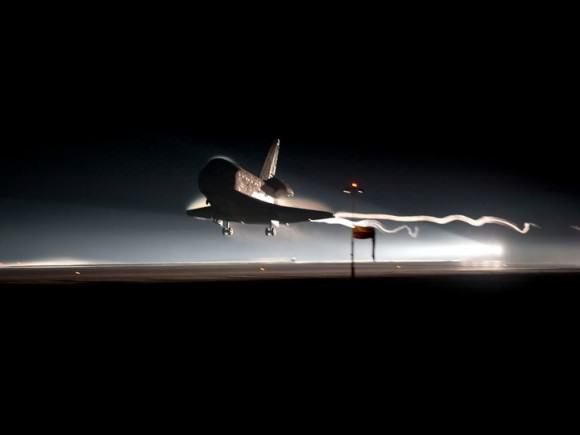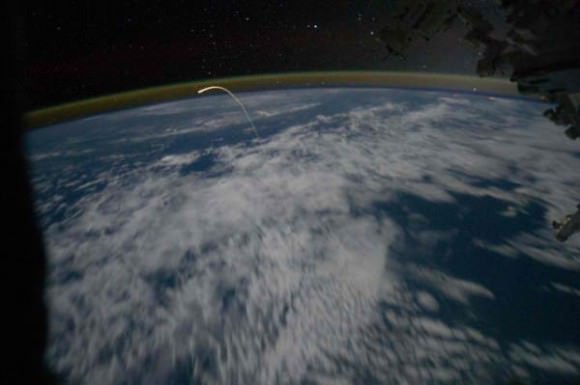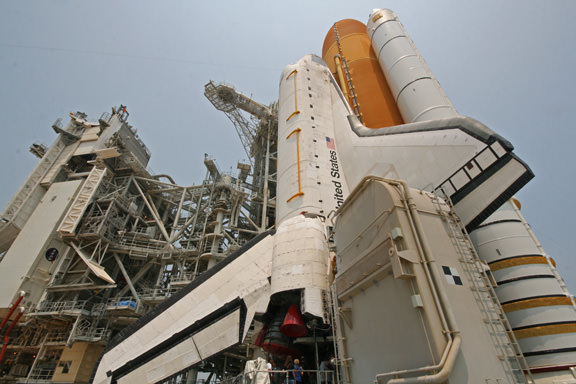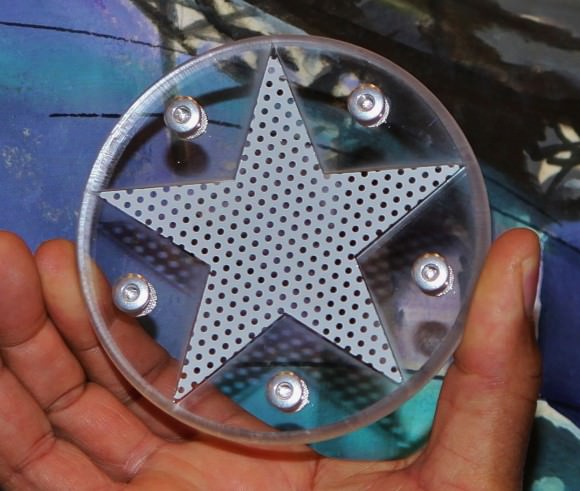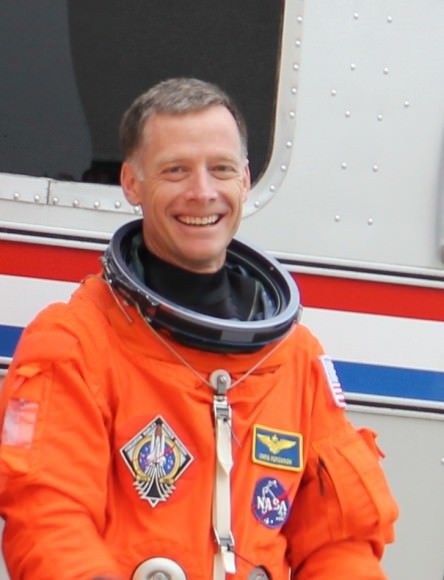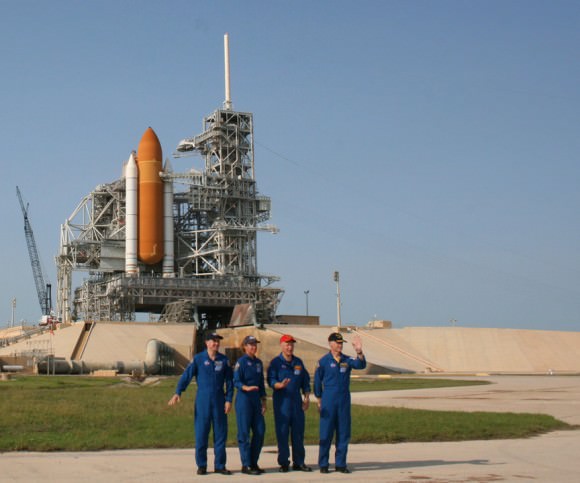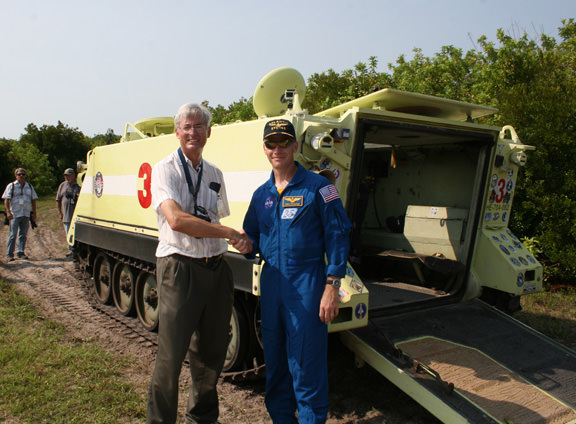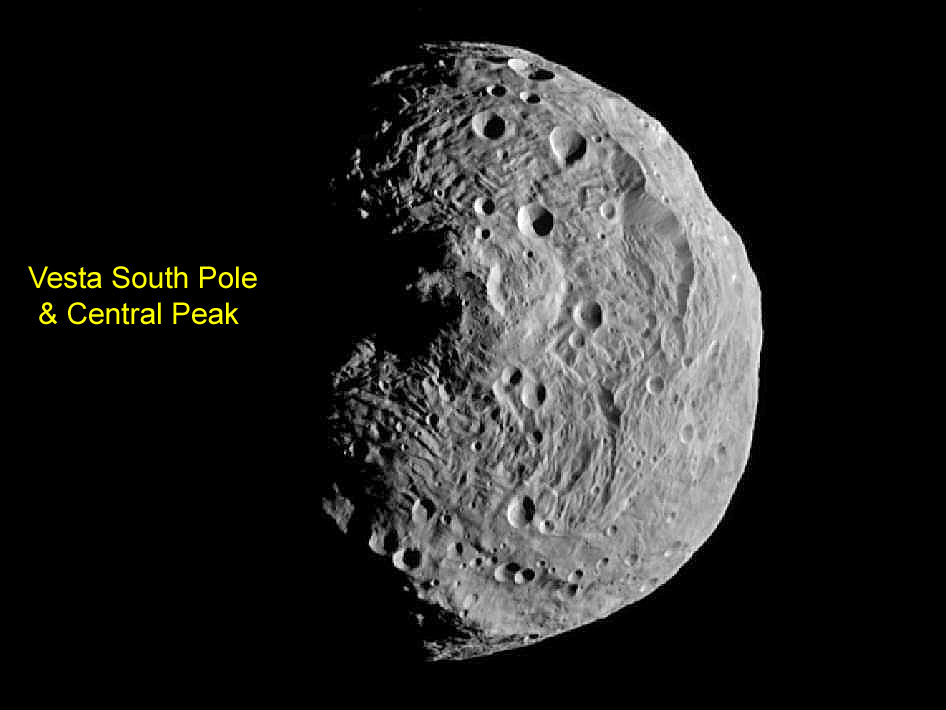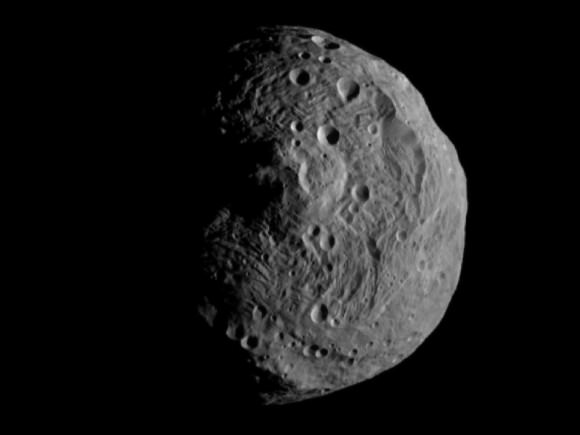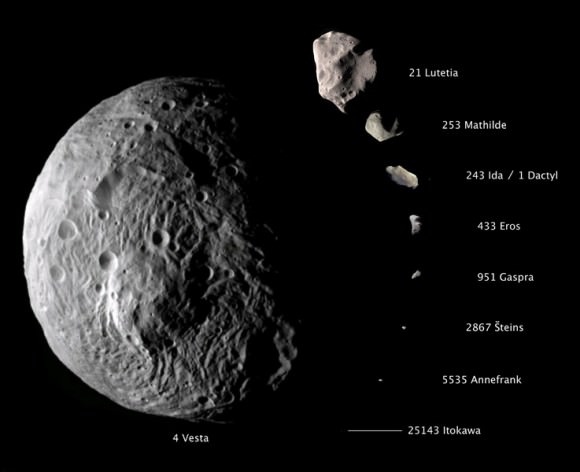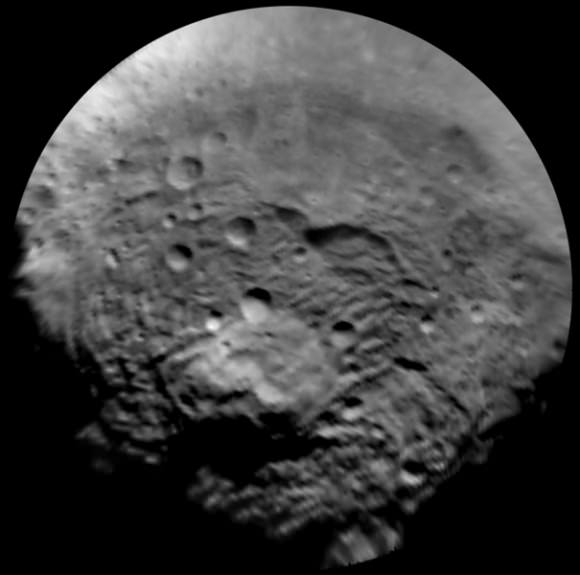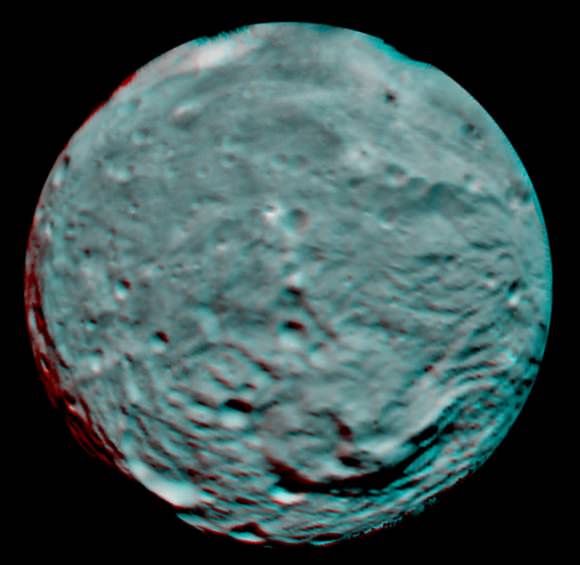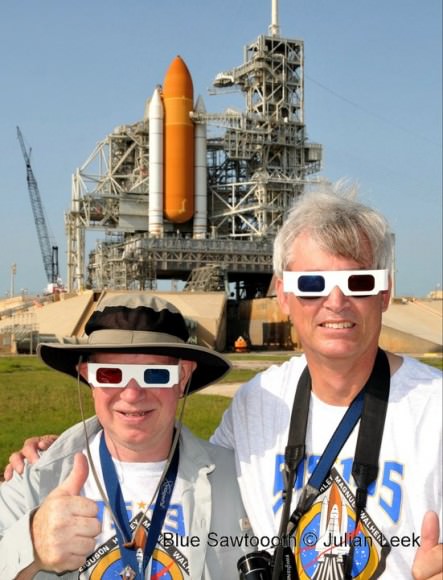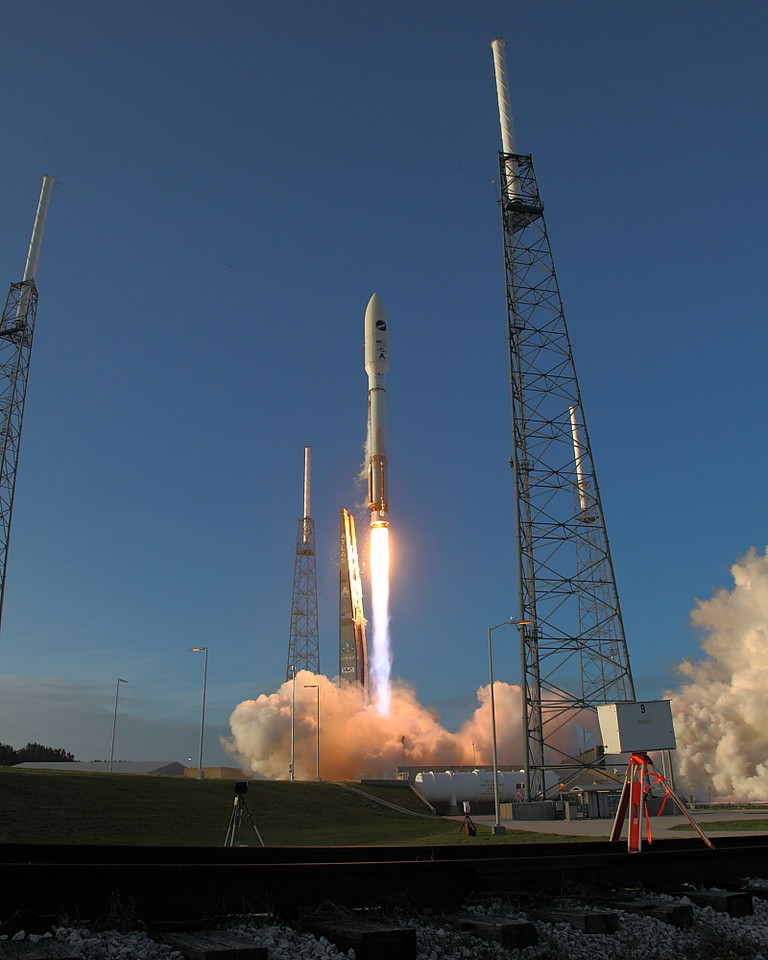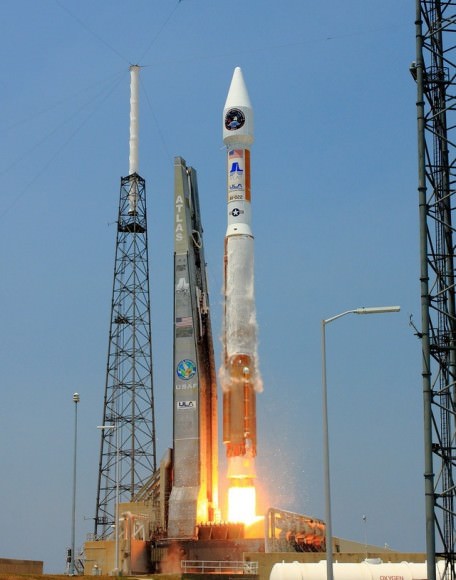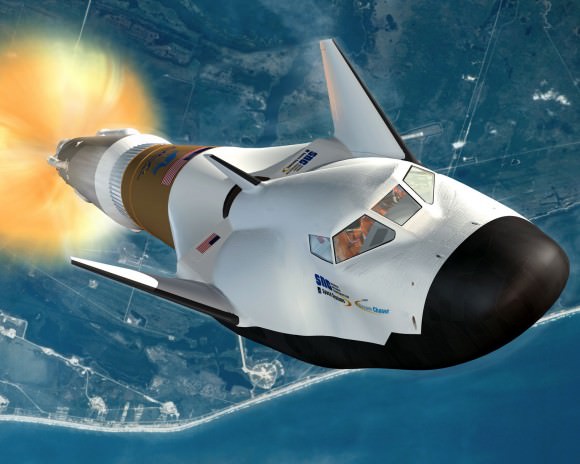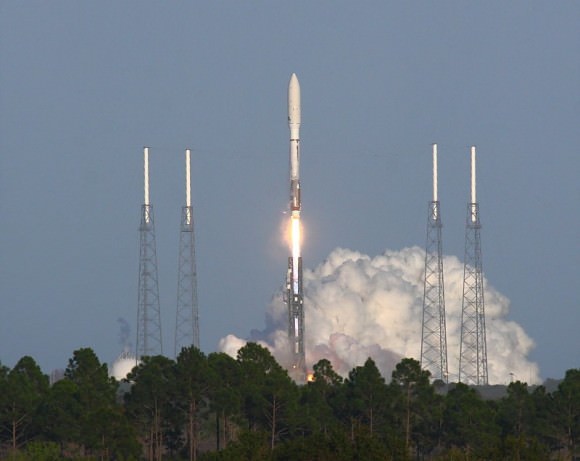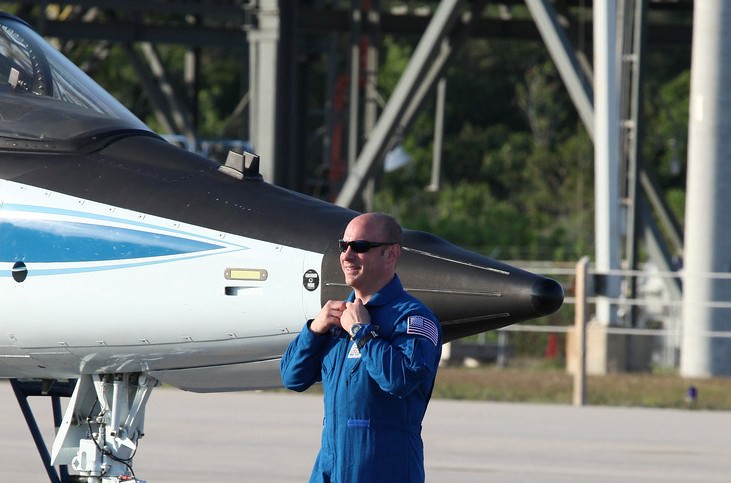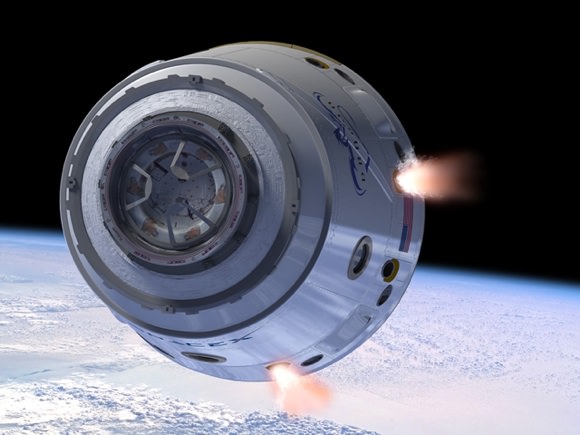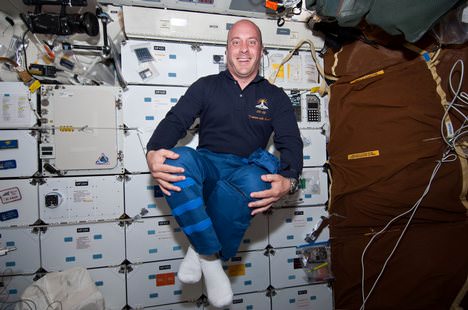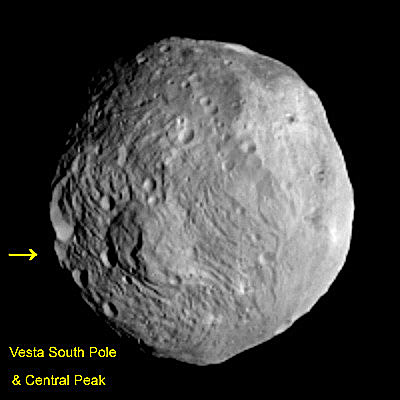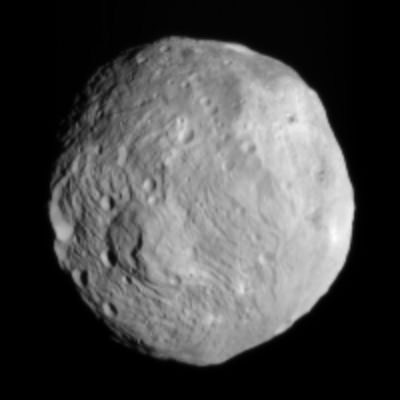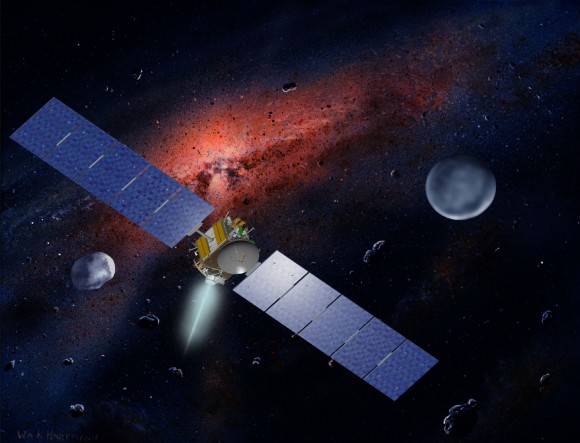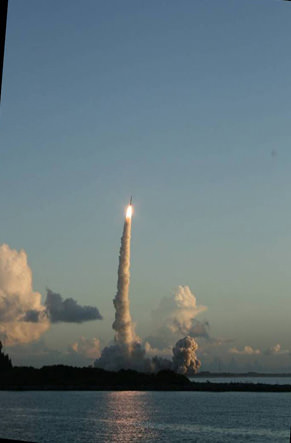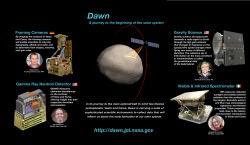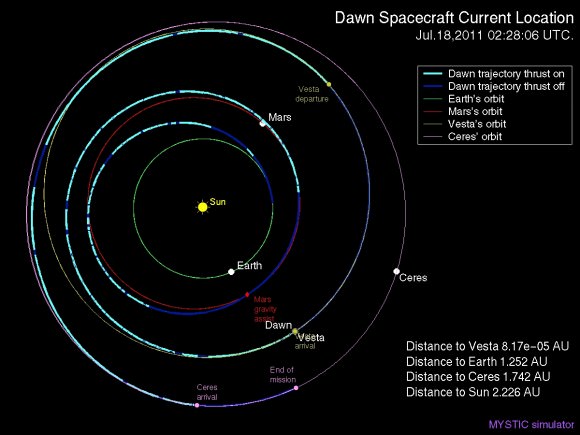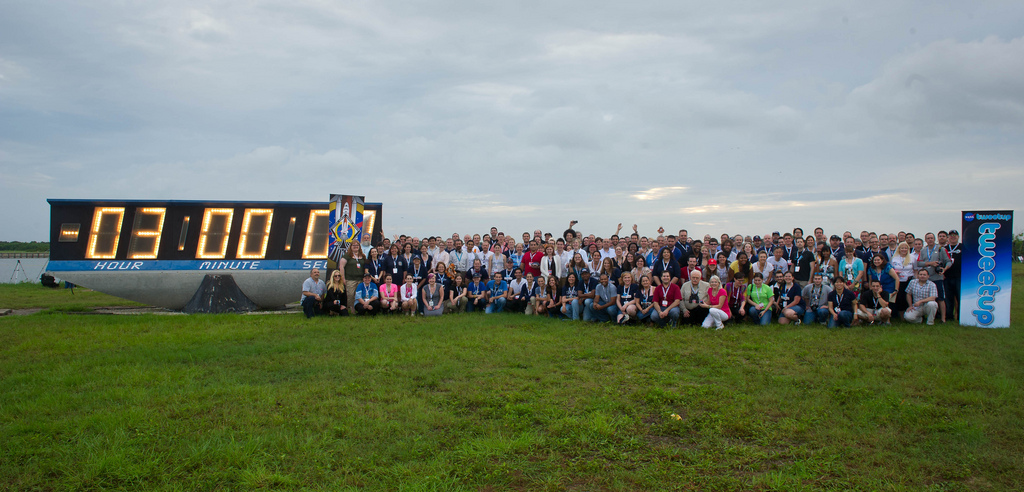[/caption]
Barely discernable in the pre-dawn twilight and appearing as an eerie, ghost like figure, Space Shuttle Atlantis and her four person crew swiftly glided to a triumphant landing at the Kennedy Space Center that closed out NASA’s three decade long Space Shuttle Era – in the wink of an eye it was all over.
Atlantis touched down almost invisibly on Runway 15 at the Shuttle Landing Facility at 5:57 a.m. EDT and rolled to a stop moments later to conclude the history making 13 day flight to the International Space Station and back. During the STS-135 mission Atlantis orbited the Earth 200 times and journeyed 5,284,862 miles.
The all veteran crew of space flyers comprised of Shuttle Commander Chris Ferguson, Pilot Doug Hurley and Mission Specialists Sandra Magnus and Rex Walheim.
The finality of it all was at once thoroughly unbelievable that the shuttles would never fly again but utterly definitive at ‘wheel stop’ that we had witnessed the end of a historic and magnificent Era in human spaceflight.
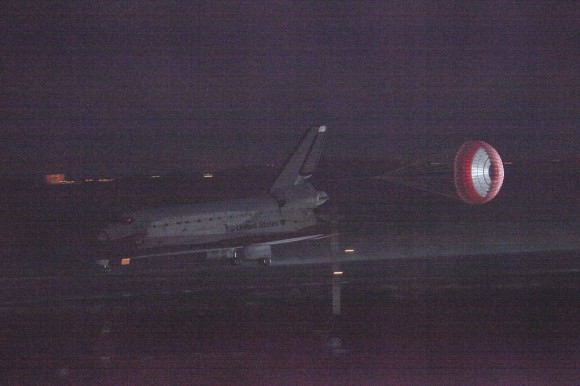
Everyone present at the shuttle landing strip let out a loud cheer and thankful applause upon the safe conclusion to the 135th and last flight of NASA’s Space Shuttle Program – since the first blastoff of Columbia on the STS-1 mission on April 12, 1981.
“Mission complete, Houston,” radioed Commander Ferguson. “After serving the world for over 30 years, the space shuttle has earned its place in history. It’s come to a final stop.”
But the sinking realization that America at that exact moment had simultaneously and voluntarily lost 100% of our indigenous national capability to send humans and cargo to the International Space Station is quite troubling to say the least.
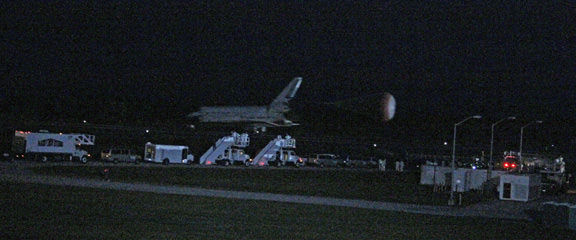
The end of the shuttle program also marked the end of employment for nearly 2000 highly talented shuttle workers in the midst of a continuing tough economic situation all across the US. And thousand more pink slips are looming.
The primary goal of the STS-135 mission was to deliver more than 9,400 pounds of spare parts, food, water, science experiments and assorted gear to the International Space Station that were loaded aboard the Raffaello multi-purpose logistics module – which functions as a ‘moving van’ in space.
All these supplies are “absolutely mandatory”, according to top NASA managers, for sustaining ISS operations for about one year into 2012. By that time NASA hopes that two US commercial space companies – SpaceX and Orbital Sciences – will have flown successful unmanned cargo flights to replace the capability completely lost with the premature retirement of NASA’s three orbiter fleet of winged Space Shuttles.
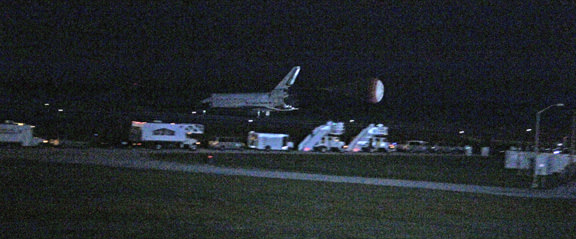
For the return trip to Earth, the 21-foot long, 15-foot diameter Raffaello brought back nearly 5,700 pounds of valuable science samples and unneeded trash to free up coveted storage space aboard the massive orbiting outpost.
“Although we got to take the ride,” said Commander Chris Ferguson on behalf of his crew,” we sure hope that everybody who has ever worked on, or touched, or looked at, or envied or admired a space shuttle was able to take just a little part of the journey with us.”
Upon departing Atlantis at the shuttle runway, Ferguson and the entire crew were welcomed back by NASA Administrator Charles Bolden and other senior officials.
“They have come to be known as the ‘final four.’ They did an absolutely incredible job,” said Bolden. “They made us very proud.”
“I really want to thank the space shuttle team and the Space Shuttle Program for just a tremendous effort today and throughout the entire history of the program. We gave them a tremendous challenge to fly and execute these missions and to finish strong and I can tell you today that the team accomplished every one of those objectives,” said Associate Administrator for Space Operations Bill Gerstenmaier at a post landing briefing for reports at the Kennedy Space Center. “I’d also like to thank the nation for allowing us to have these thirty years to go use the shuttle system.”
“It is great to have Atlantis safely home after a tremendously successful mission — and home to stay,” said Bob Cabana, Kennedy Space Center director.
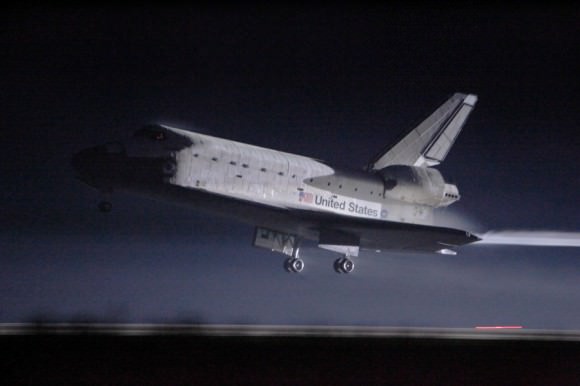
Atlantis future retirement home will be constructed just a short distance away at Kennedy Space Center Visitor Complex (KSCVC).
Visitor Complex COO Bill Moore told me that he expects Atlantis will be put on permanent public display in 2013 after completion of a new 64,000 sq. ft exhibition building to house the orbiter. Atlantis will be displayed as though it were “In Flight.”
“I’m unbelievably proud to be here representing the Space Shuttle Program and the thousands of people across the country who do the work,” said Mike Moses, space shuttle launch integration manager. “Hearing the sonic booms as Atlantis came home for the last time really drove it home to me that this has been a heck of a program.”
“The workers out here and across the country in the Space Shuttle Program have dedicated their lives, their hearts and their souls to this program, and I couldn’t be more proud of them,” said Mike Leinbach, the space shuttle launch director at KSC.
Altogether Atlantis flew 33 missions, spent 307 days in space, orbited Earth 4,848 times and traveled 125,935,769 miles. Atlantis was the last of NASA three orbiters to be retired and closed out the Space Shuttle Era.
Wheels stop marked the dreaded end of American manned spaceflight from American soil for many years to come. No one can say with certainty how or when America will again launch humans to space.
From one moment to the next America’s leadership in space position has evaporated – with the utilization of the most capable spaceship ever built and now operating at the peak of its performance yielding instead to reigning uncertainly as to what comes next given the dire outlook for the NASA budget in the foreseeable future.
A new US manned launch system – most likely in the form of a commercial “space taxi” – could perhaps lift off by mid-decade, but the task is formidable and the funding obstacles are sky high.
In the meantime, America is fully dependent on the Russians to loft Americans to space. All US astronauts headed to the ISS for the next three to five years at a minimum will be forced to hitch a ride aboard a Russian Soyuz capsule.
Atlantis Final Landing Photos contributed by Alan Walters, Ken Kremer, Mike Deep, David Gonzales, John L. Salsbury and Chase Clark
Up next: Wheels Stop with Atlantis on the Shuttle Landing Strip and Towback to the Orbiter Processing Facility
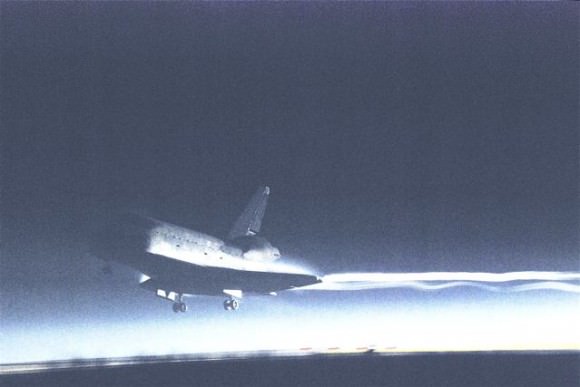
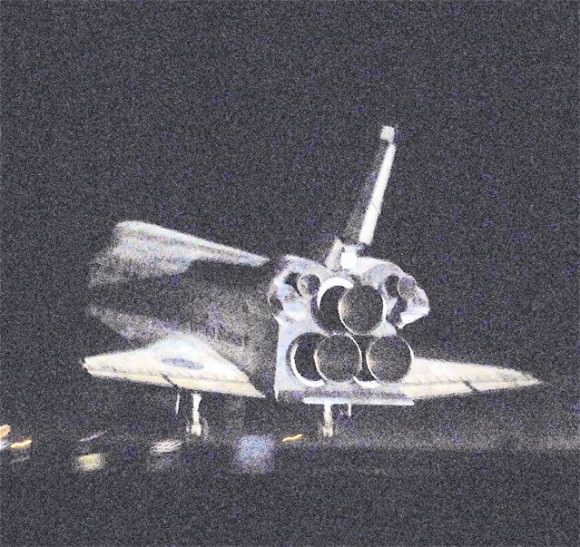
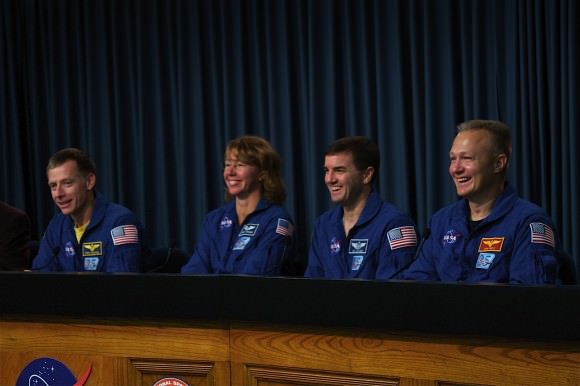
Read my features about the Final Shuttle mission, STS-135:
Love of Science Drives Last Shuttle Commander – Chris Ferguson Brings Science Museum to Orbit
Revolutionary Robotic Refueling Experiment Opens New Research Avenues at Space Station
Water Cannon Salute trumpets recovery of Last Shuttle Solid Rocket Boosters – Photo Album
Shuttle Atlantis Soars to Space One Last time: Photo Album
Atlantis Unveiled for Historic Final Flight amidst Stormy Weather
Counting down to the Last Shuttle; Stormy weather projected
Atlantis Crew Jets to Florida on Independence Day for Final Shuttle Blastoff
NASA Sets July 8 for Mandatory Space Shuttle Grand Finale
Final Shuttle Voyagers Conduct Countdown Practice at Florida Launch Pad
Final Payload for Final Shuttle Flight Delivered to the Launch Pad
Last Ever Shuttle Journeys out to the Launch Pad; Photo Gallery
Atlantis Goes Vertical for the Last Time
Atlantis Rolls to Vehicle Assembly Building with Final Space Shuttle Crew for July 8 Blastoff

